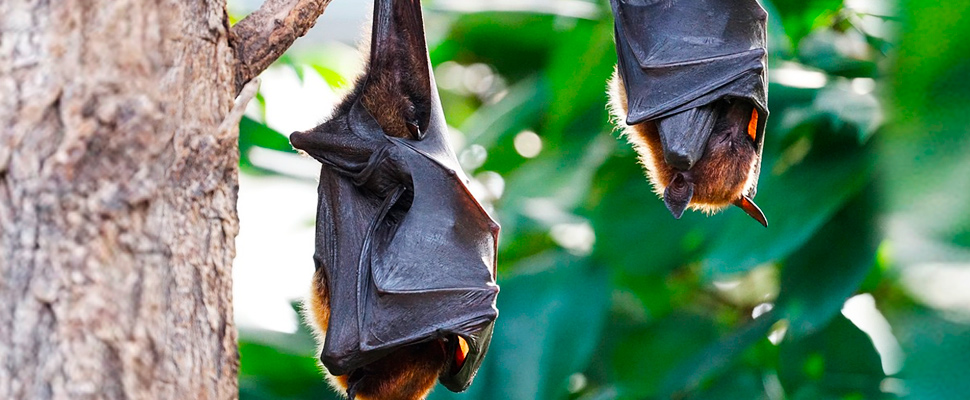Humans are making vampires starve in Brazil
Hollywood has taught us that vampires are killed with wooden stakes embedded in the heart, repelled with garlic heads tied to doors and windows, these demonic creatures of spooky nightmares are frightened with crucifixes and of course to rid us forever of their malignant presence and burning in ashes, they can also be shot with silver bullets or sprinkled with holy water.

Bats sleeping / Photo: Pixabay – Reference Image
LatinAmerican Post | Alberto Castaño Camacho
Listen to this article
Leer en español: Estamos matando de hambre a los vampiros en Brasil
However, apparently humans have found a more efficient way to end, at least with a kind of vampires, although this has nothing to do with the impeccable feathers novel characters such as "La Morte Amoreuse" (The Dead Woman in Love) by the French writer Théophile Gautier or with exquisite pieces of the seventh art like the old Nosferatu, a 1922 film; and far from the Twilight saga.
The death of the vampires referred to in this article is Diphylla ecaudata, a kind of hematophagous or vampire bat that lives in tropical forests in southern Texas in the United States, Mexico, Colombia, Venezuela, Peru and Brazil and that He is known as the vampire with furry legs or double shield.
There, precisely, in Brazil and in 2017, it was where an investigation was carried out by a team of scientists made up of researchers Fernanda Ito, Enrico Bernard and Rodrigo A. Torres of the Federal University of Pernambuco, in Recife; which determined that this species of hematophagous bats, are changing their diet and now they are consuming human blood.
These small flying mammals that are fundamental to the functioning of ecosystems in the places where they live, specifically those of this species, consume blood from birds in a traditional way, not from mammals, and are adapted to be the blood of birds, the ones that support their diet. It has been determined that they preferentially consume in their natural habitat, the blood of large birds such as the Guans and Tinamous species whose content is fattier than protein, such as the blood of mammals.
Analyzing the feces of 70 of these hematophagous bats or vampire bats, from all these samples they managed to obtain the DNA of 15 of them and highlighted within the investigation that three of them appeared human DNA sequences.
Also read: Why did coffee and jaguars become friends in Latin America?
“This is supremely strange because these types of bats feed exclusively on the blood of birds, mainly large ones,” said Ginna Paola Gómez Junco*, a researcher at the International ProCAT organization and an expert on the only flying mammals that exist in the planet, the bats.
Years earlier, another group of scientists had claimed that the Diphylla ecaudata were starving because of the dramatic decrease in the number of birds as a result, in turn, of the destruction of their own habitat, this due to the expansion of the agricultural and livestock frontier, to the invasion of man towards areas that were previously in good condition.
“It is simply another example of how the lack of understanding in the functioning of ecosystems causes immense losses to biodiversity and with it, potentially, could unleash public health problems, economic losses and even changes in the social and cultural traditions of the different communities around the world,” said Gómez Junco.
The ProCAT researcher added that “the man tombs the forest, that is to say, the deforestation progresses and with the forest many species leave, when they leave, they affect in a decisive and many times definitive way many others that were associated with that forest and those species that inhabited it.”
But she stressed that “the study is very important, however, the sample is very small, 70 bats is very little in fact, in addition, that only three of them have had positive results for humans, the result is so small that in no way can we talk about a modification of the diet ”, emphasized Gómez Junco.
Also read: Amazon deforestation and number of fires show summer of 2019, not a 'normal' year
Even the authors of the study affirm categorically in the conclusions of the scientific article that it is essential to conduct many more studies, with much larger and deeper samples, to be able to determine precisely what is happening with this species throughout its distribution in America.
In this area of northern Brazil, man has replaced the forests with grasslands on which they settle their farms and with them comes cattle, pigs and goats. However, it would be hasty to say that bats, in order to keep the species alive, fleeing extinction, try to adapt by modifying their diet and stopping taking their tablespoon of daily bird blood, which is the portion that an adult animal requires, to exchange it for the blood of any of these mammals, pigs, cows, goats and even humans. There are still studies that can lead to this conclusion.
At the moment it is tried to determine with what periodicity these bats feed with the blood of mammals because it is well known that they can be vectors of diseases like Rabies and it has even been established that they can be transmitters of the Hantavirus that, like Rabies, is life-threatening.
Once again it is demonstrated that the modification of the ecosystems and the impacts that are caused to them, generates consequences, in this case, the dimension of them is still unknown, but without a doubt, if the transformation of the ecosystems continues in such a way drastically, they will not only be economic losses, it could have effects on public health.
*The researcher also states that by March 2020 it is expected that there will be a larger sample





